Kenya 2014 – Day 5: Porini Lion lives up to its name
November 22, 2014 (Previous day)
After a stay in Samburu that was less overwhelming than my previous visits (but still with some very powerful experiences), I was hoping that the Mara area would still stand out as the top wildlife experience to my friends on their first visit to east Africa.
We had booked the exclusive use of 4×4 just for us during the stay, something that is almost essential if you’re going on a photo-centric trip, but also something I would recommend even if you’re just going on a family holiday. It ensures that you are free to go wherever you want and stop whenever you want and for as long as you want. But most importantly it means you’re free to start whenever you want in the morning, and when staying in the conservancies, you’re not limited to going out after sunrise, like in the official parks and reserves. For photography, this is a big deal, as it lets you find a subject in time for sunrise and good light.
We had arranged with Big John and Jared to leave early and take a packed breakfast, so departure from our tents were in total darkness.
Only minutes after leaving the Porini Lion camp, John and Jared spotted a Lioness with a small Thomson’s gazelle calf, probably returning to her litter.
We followed her as she walked back towards were we came from. Within a few minutes, she was passing just outside the camp like it wasn’t there. With the picture below, it’s not hard to imagine why Porini Lion is named as it is, or why people are raving about the wildlife experiences from this camp on Tripadvisor:
We let her continue in peace and continue on our way. Not far outside the camp area on the hillside up to the Olempaiakae ridge we come across a group of Topi. These are the champion runners among the grazers on the savanna and will normally outrun both wildebeest, zebras and small gazelles. Even the calves are capable of running relatively fast only minutes after they’re born. The one on the left leaning against its mother was probably born during the night.

Young Topis with parents in the warm sunrise over Masai Mara. The one on the left is newborn and still leaning against its mother
In some dense bushes we spot a group of young lions waiting for their mothers to return from the morning hunt. The light is still soft and comes through the foliage behind them, providing a nice backdrop.

Lion cubs resting in the cover of bushes while they’re waiting from their mothers to return from the early morning hunt
A bit later we’re sitting in the car waiting for a leopard to show itself from under some dense bushes, when our guides point in front of the car and explain there’s a bat there. We all look in the direction they’re pointing but I don’t think any of us spot it for a long while and until we get detailed instructions of where it is. Turns out it’s hanging literally over the bumper of the Landcruiser, but is amazingly camouflaged. Shot with the 500mm telelens it doesn’t look so impossible to see, but it was really the perfect disguise. One can understand why it’s spending the day out in the open instead of caves and tall tree tops like it’s cousins.

A Yellow-winged bat hanging just some 150cm above the ground, looking like a dried fruit or shrivelled leaf
Normally you don’t see a lot of sick or badly injured animals on the Mara plains. The predators will usually see to that. But sometimes you’ll see some animal with a recent injury or an issue. Yet I’ve never seen anything like one zebra we saw this day. We had a discussion in the car what the possible reasons could be for this, including internal displacement of bowels from a predator attack, infections, cysts, etc, but in summary none of us really had any good ideas. The biggest question was still how it was still alive and not already killed by lions.
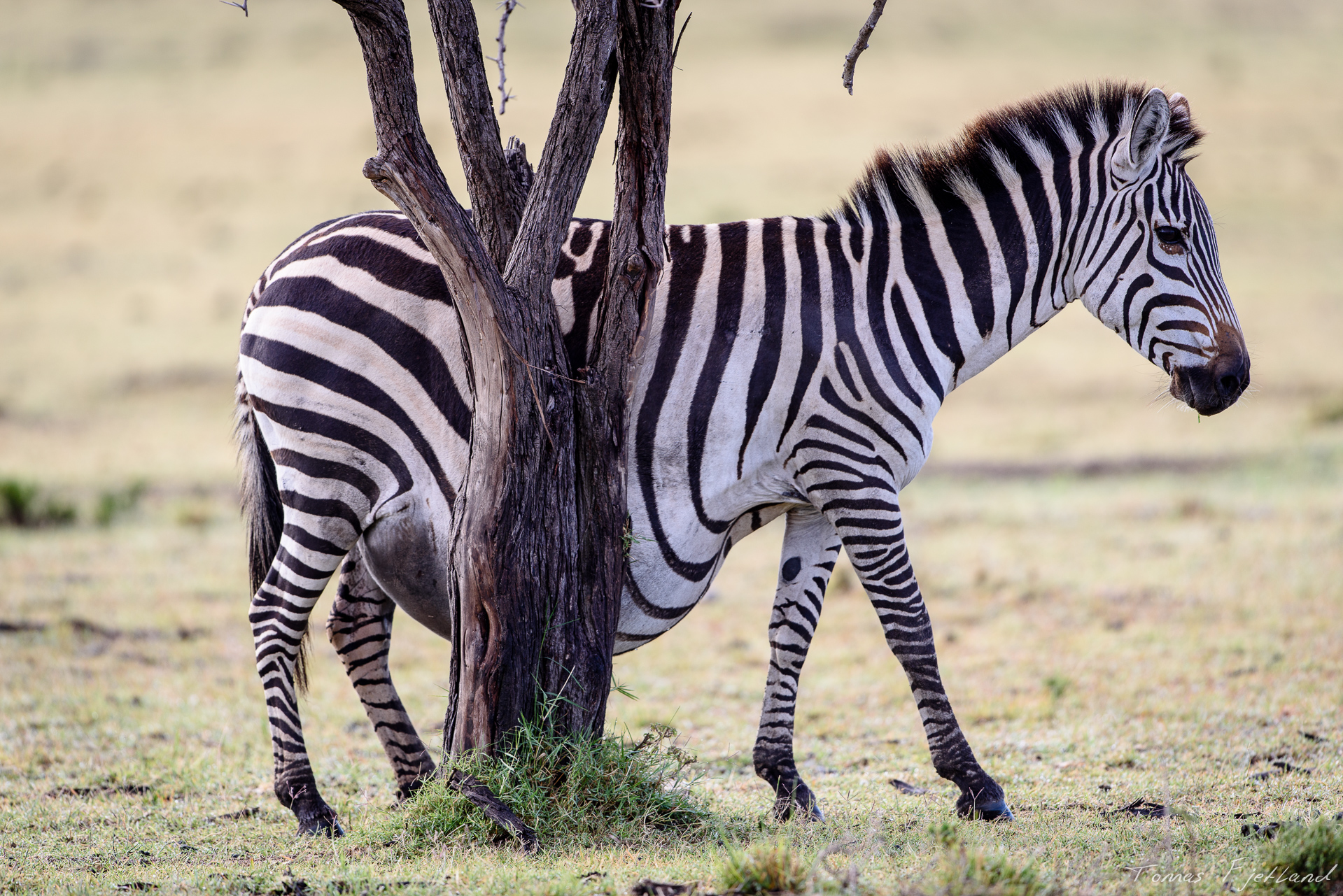
You don’t really see many obviously sick or injured animals on the savannah, the predators normally see to that. I wonder how this Zebra made it this far
Speaking of nature’s maintenance services, an old wildebeest carcass would normally be swarmed by white backed vultures and other smaller vultures. But as we approached such a carcass, the arrival of two huge lappet-faced vultures had caused the others to clear off. There was an obvious rank order where one approached the other with considerable care and submissive posture.
In the conservancies there are less gravel roads like in the National Parks, and driving mostly happens on barely visible paths, or where appropriate freely at the discretion of the local guides. Along one of the commonly used paths, a Crowned Lapwing had decided to lay her eggs, so some helpful passers by had built a circle of rocks around her to make both her and the eggs easier to see by other drivers. They are both very well camouflaged, so this probably saved her life. She didn’t move even as we drove past in the 4×4.
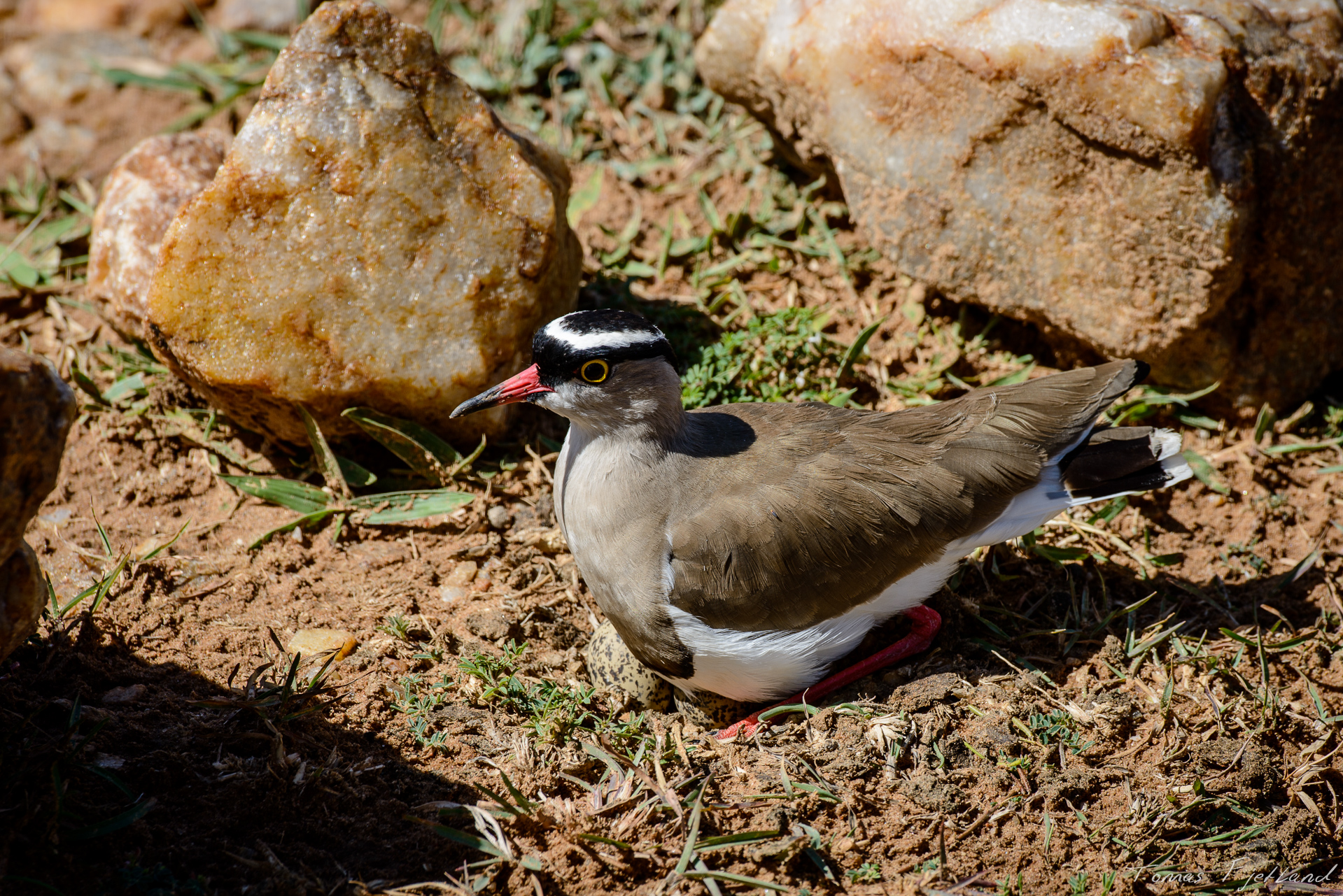
This Crowned Lapwing had decided to lay its eggs in the middle of a 4×4 path, but some helpful Maasai had surrounded her with rocks to alert drivers and make them drive around

This panorama shows a typical part of the landscape as well as several of the animals normally found in the Mara ecosystem
We come across a hippo grazing on land just as we’re heading back towards camp. The only times I’ve seen this before have been early in the morning while they’re on their way back to their pools and rivers where they normally spend the days. But this one seemed to be unbothered by both the strong sunlight and our presence. It was already almost noon and the light was hard and unpleasing.
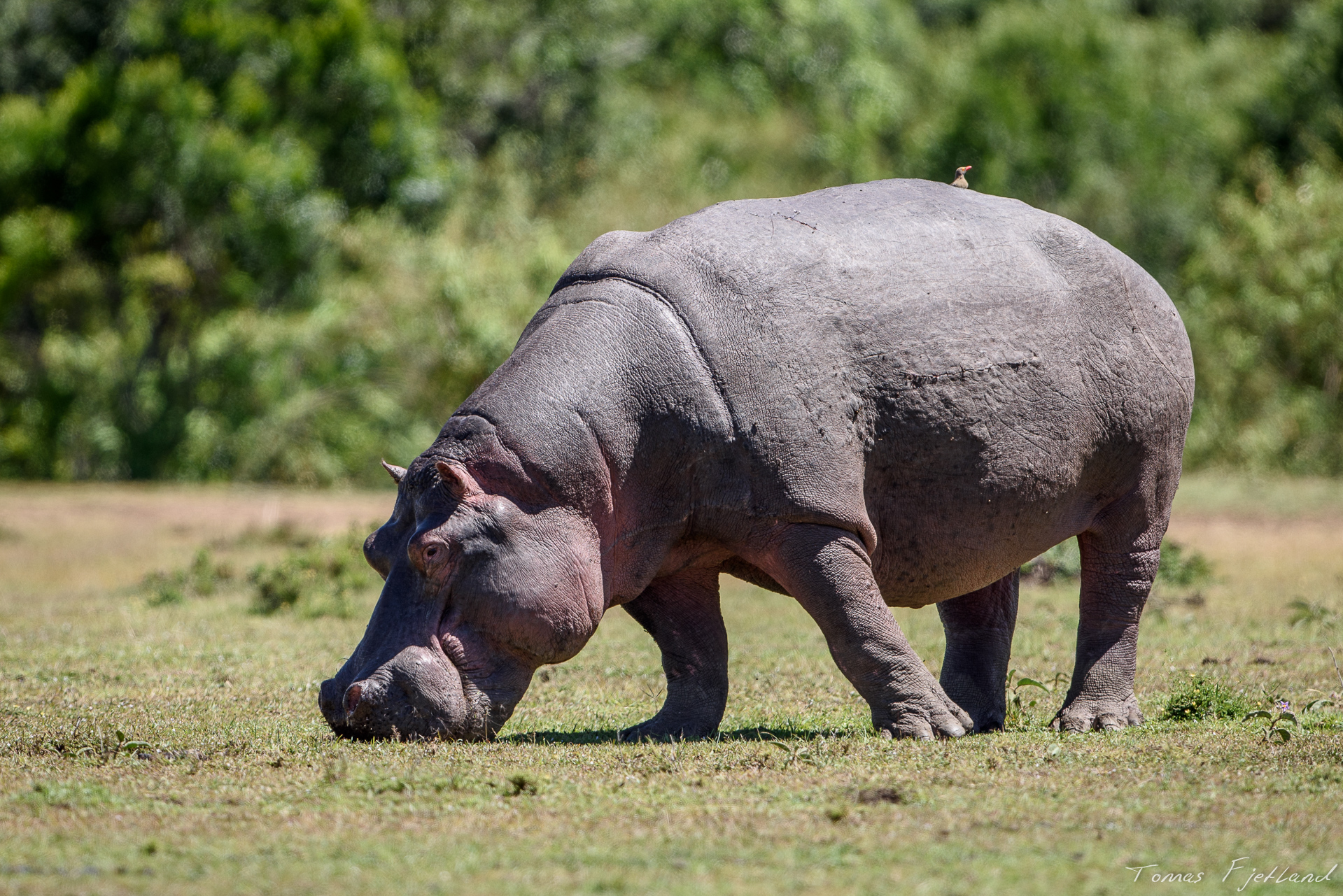
Normally the hippos will have returned to the safety and sun protection of the pools and rivers by morning, but this guy was still out and about
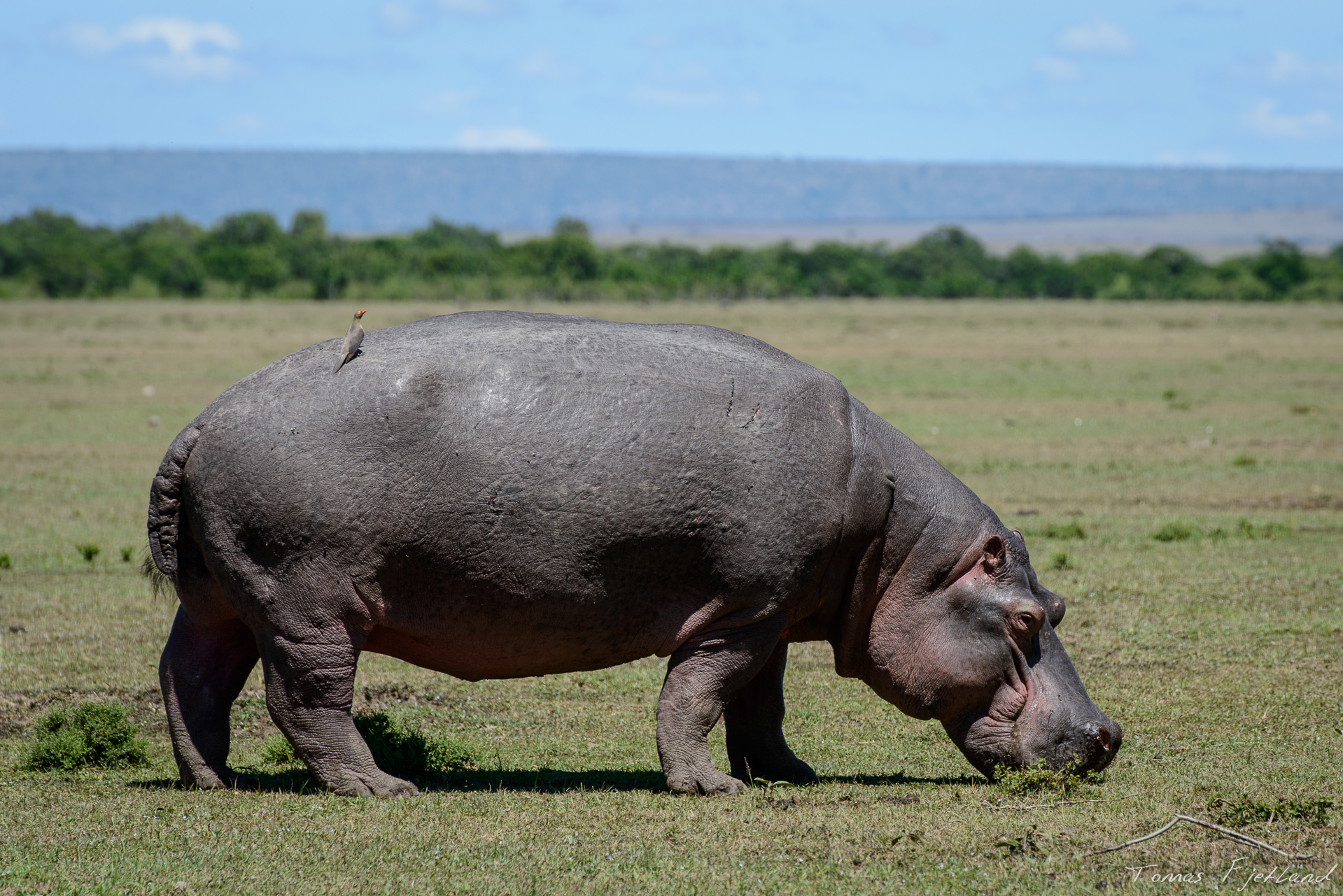
This Hippo posed for us for a long time, and didn’t seem concerned about our presence at all. Too bad it was nearly noon and the light was the worst possible
Returning to Porini Lion for lunch, we spotted this secretary bird hunting wasps.
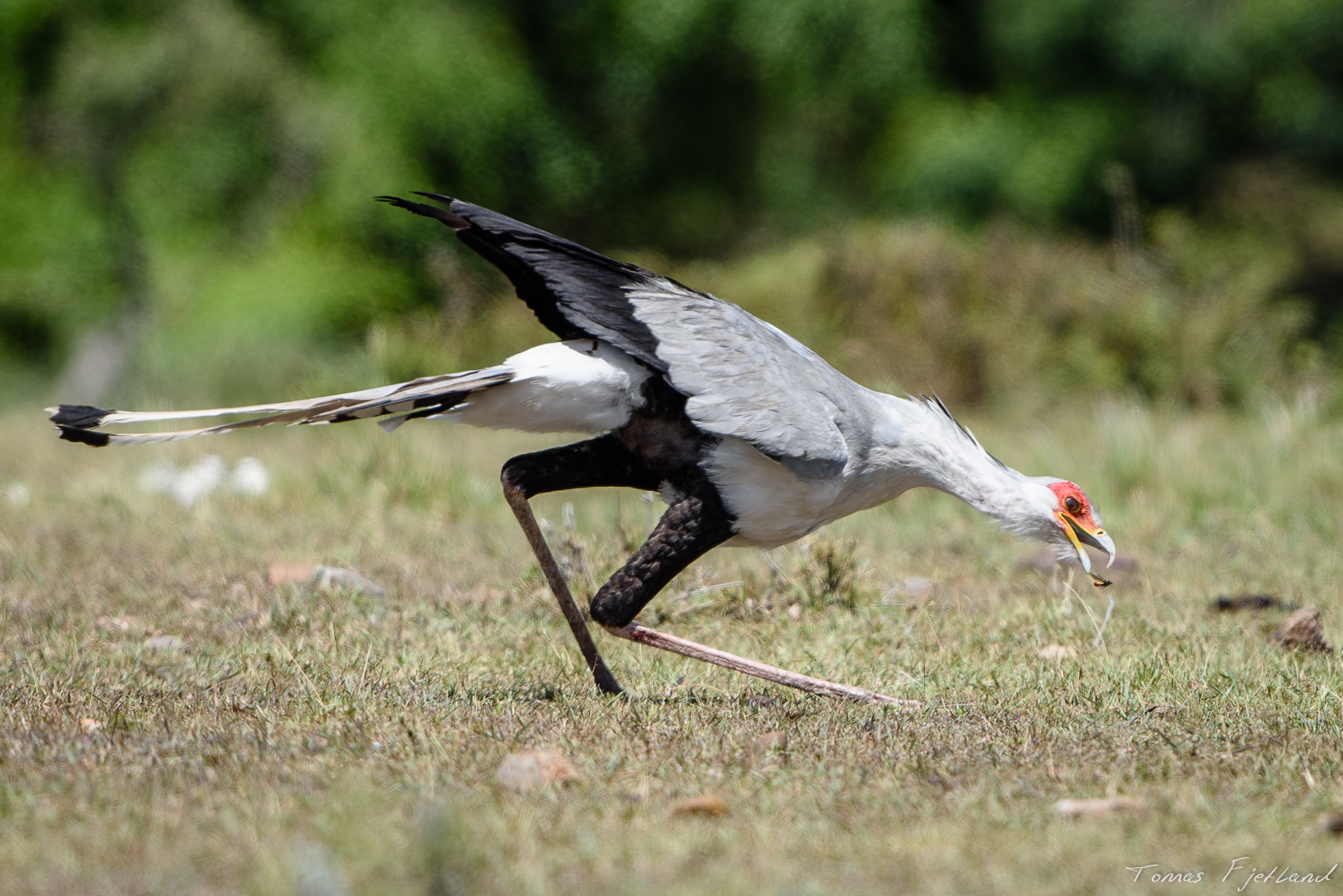
Just outside the Porini Lion camp on our way back for lunch, we saw this Secretary bird hunting wasps and other insects as well as reptiles
Returning late to the camp, we only had time to unload the gear and relax a short while before lunch. Afterwards some took the opportunity to relax a bit in the share and read a book, while some of us had a look around for something to photograph. A little after 16:00 we headed out for the evening game drive.
Leaving the camp, I took this shot of the camp and the surroundings. As an eco camp it has a very modest footprint in the surrounding nature.

An overview of the southern part of Olare Motorogi conservancy with the tents of Porini Lion sticking up along the creek. I think it’s Porini Lion, anyway…
In my visits to Kenya I haven’t really had a good opportunity to photograph the shy serval cat. Well, I guess I didn’t this time either, but at least we found one in its den, and you can sort of make out its face, so I’m putting it in here 🙂
As the day was coming to an end and the sun was coming down low, we came across two young cheetah males, known as the Ololo brothers. From what I remember, these were new to the territory and were looking for females. We decided to follow them. If we were lucky they’d go hunting, and even if they didn’t cheetahs in sunset are still pretty awesome. I’ll let the shots do the talking from here on…

We caught up with the Ololo brothers in the afternoon. Seems they were waiting for the air to cool before continuing their patrol
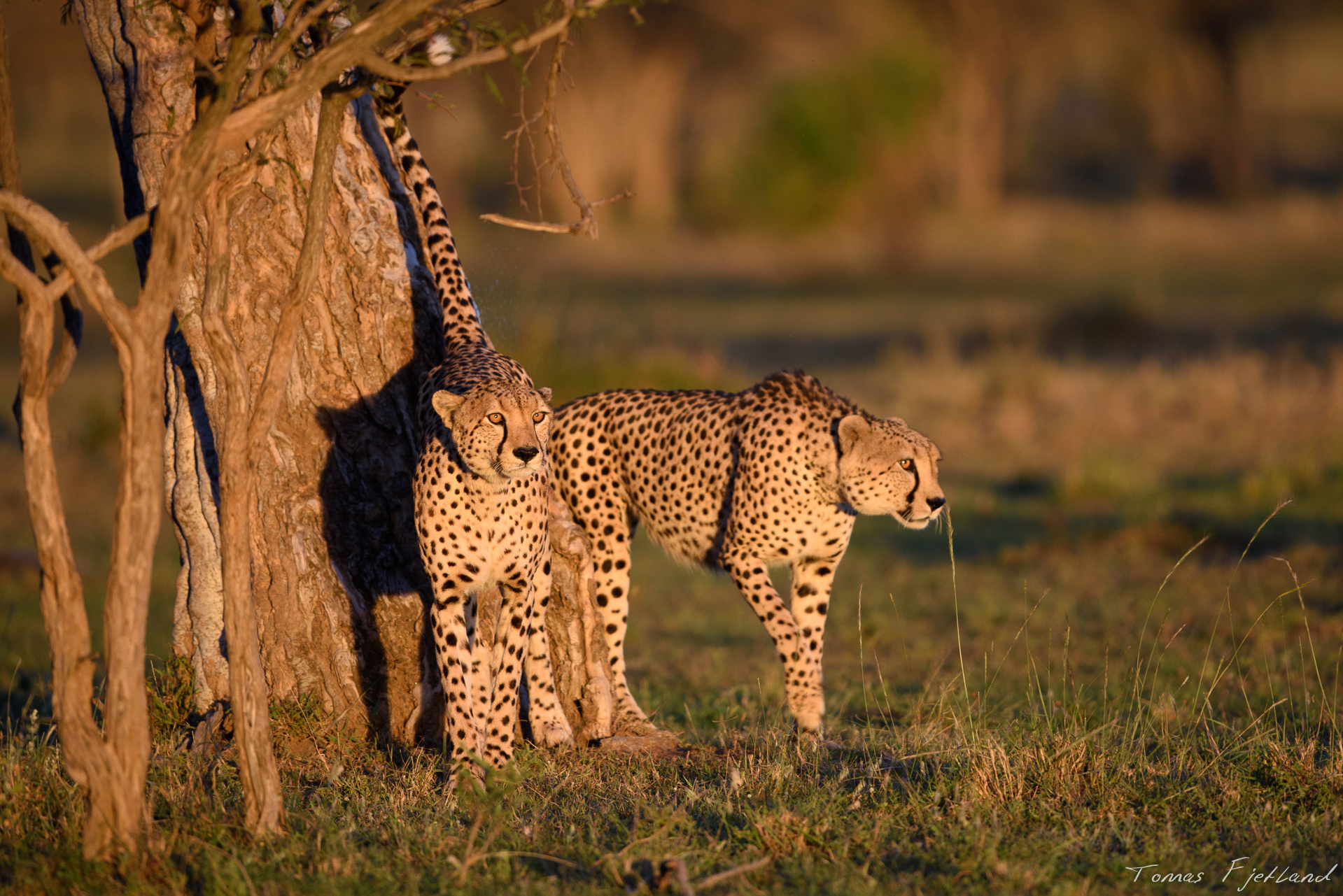
As they’re tracking the scent of a female, the brothers are also leaving their own scent marks, establishing themselves in this new territory
As the sun sets below the hills, there’s not really enough light to do any more shooting and we start packing away our cameras when Big John points us to a ridge just to the side of the last light. “Maybe you could shoot those in silhouette if I drive forward a bit?” he asks. Turns out there’s a group of Thomson’s gazelles and Impalas going amok on a nearby hill, doing wild jumps and chasing each other. It’s perfect!
John places the car perfectly so the antelopes are between us and the illuminated sky, and I get one of my favorite shots from the day. The advantage of having guides that’s also photographers and that guide many of the professional photographers visiting the area!
It was a long and exhausting day so as we head back to the camp I think everyone looks forward to a nice shower before dinner, and then sleep.
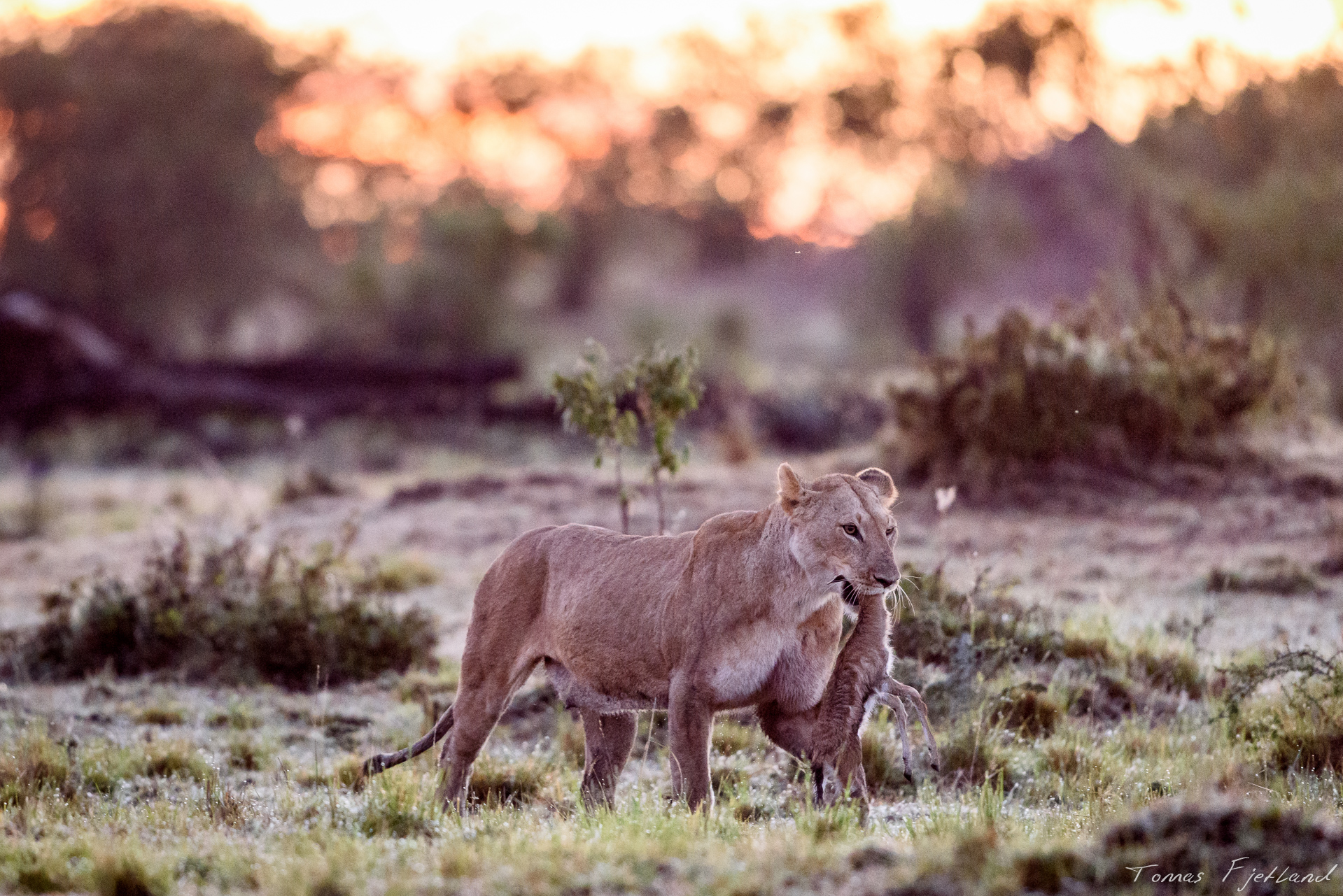
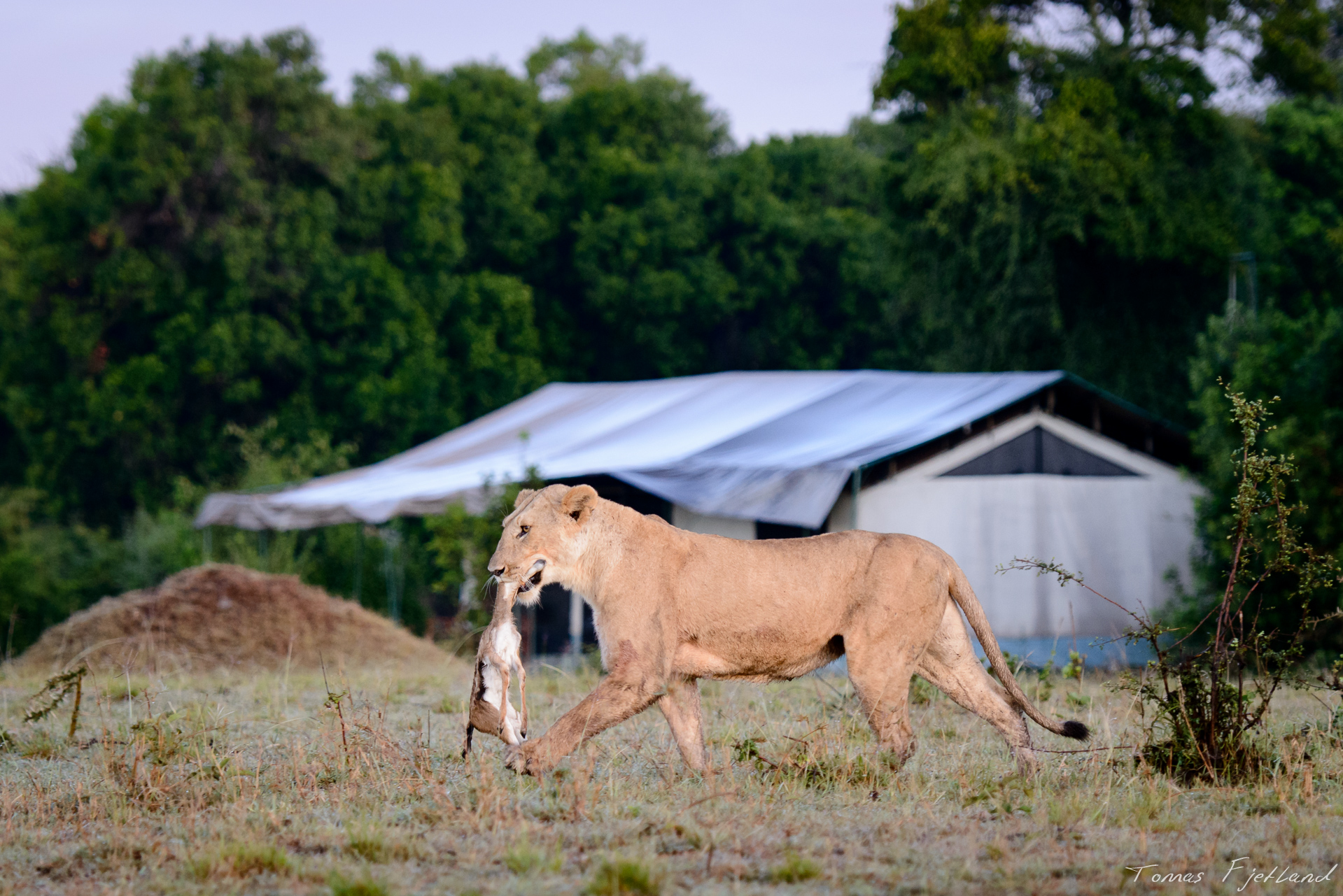
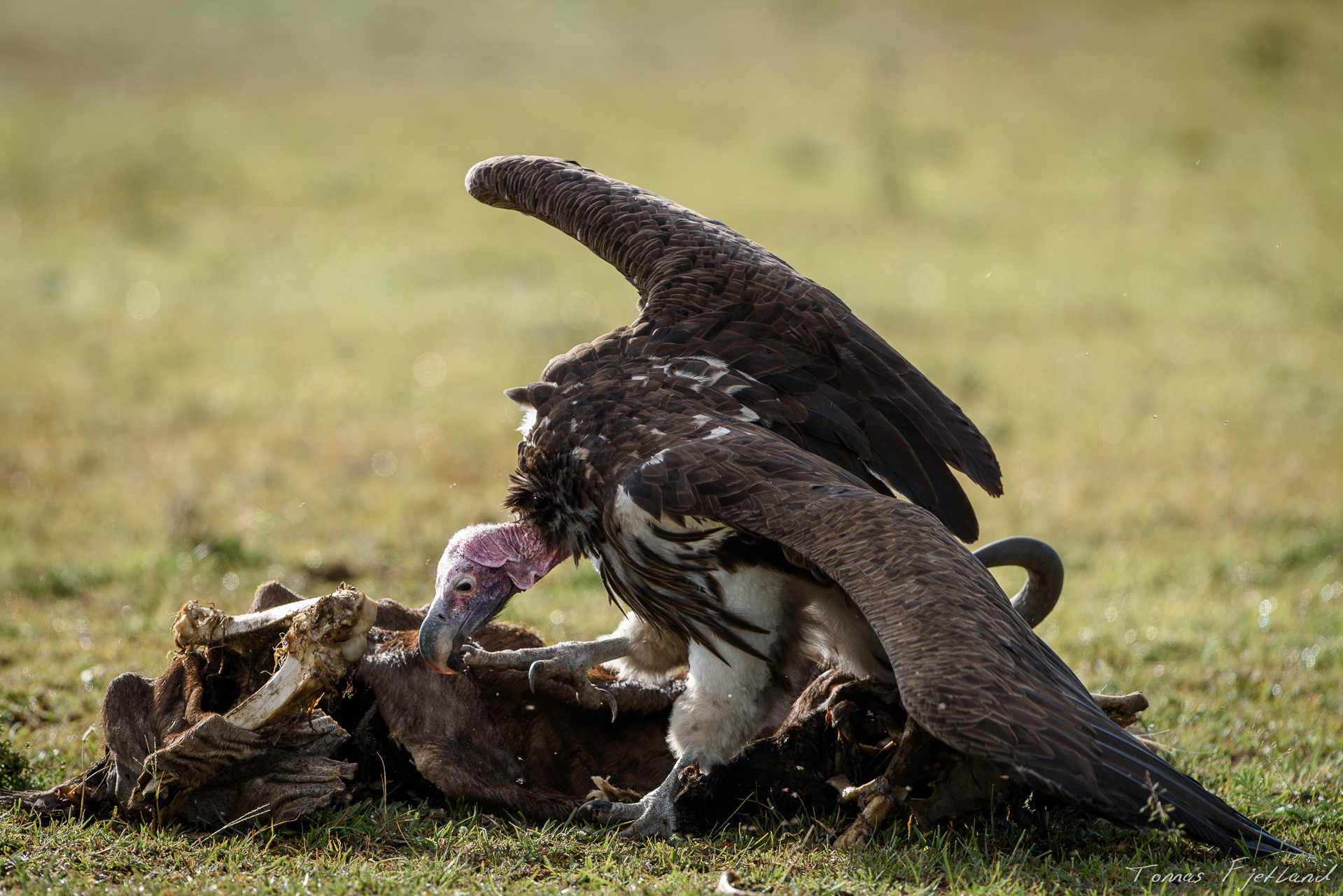
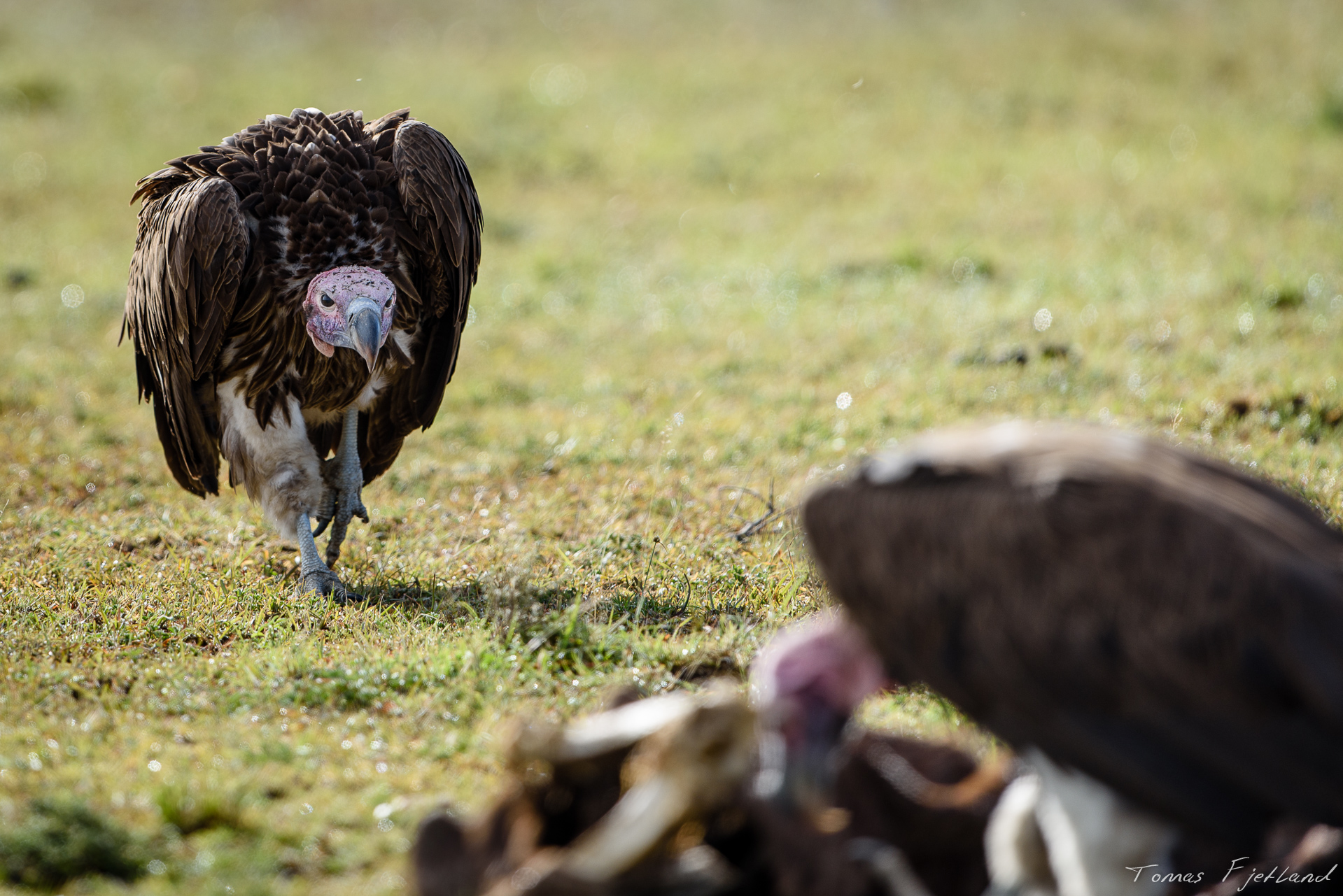


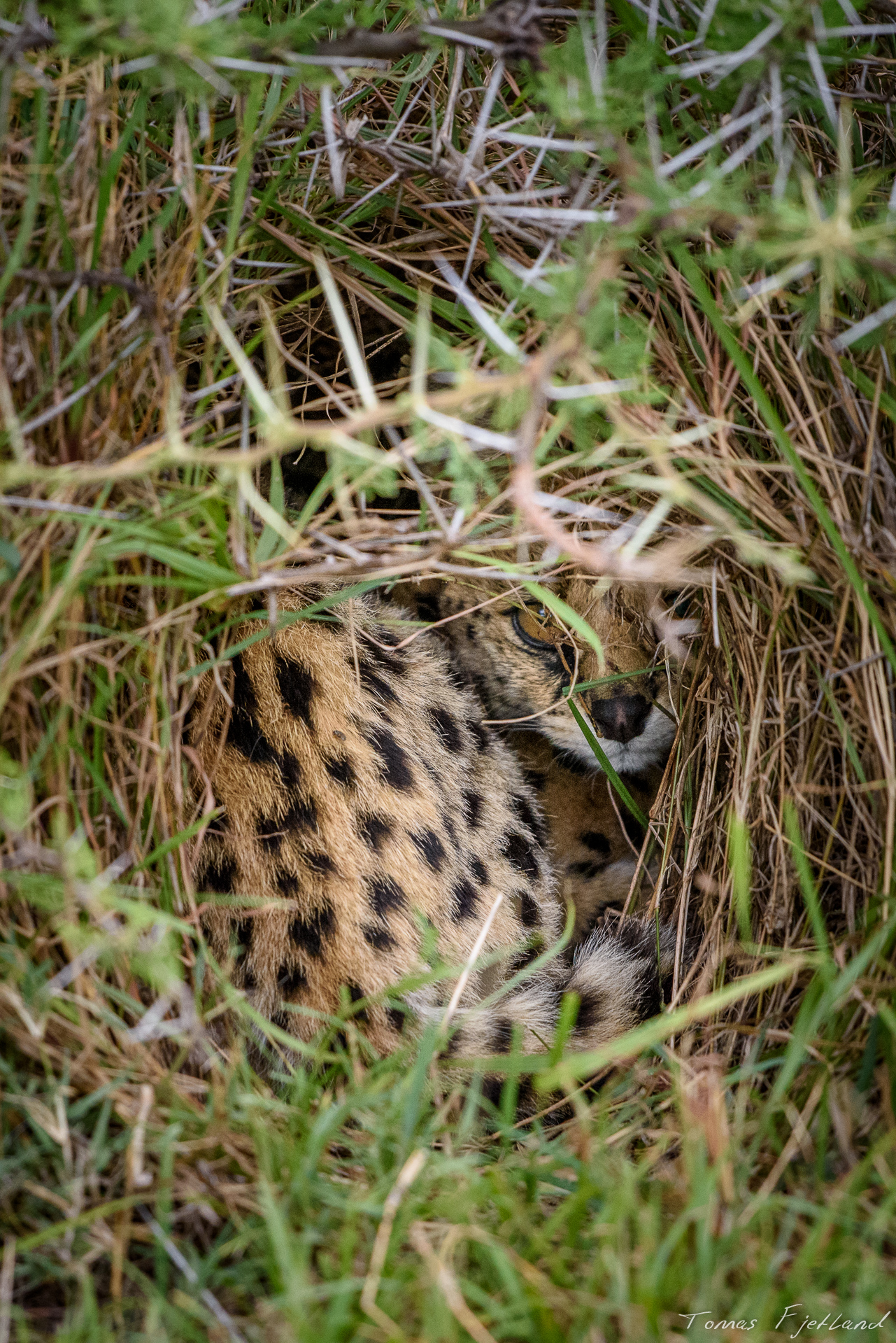


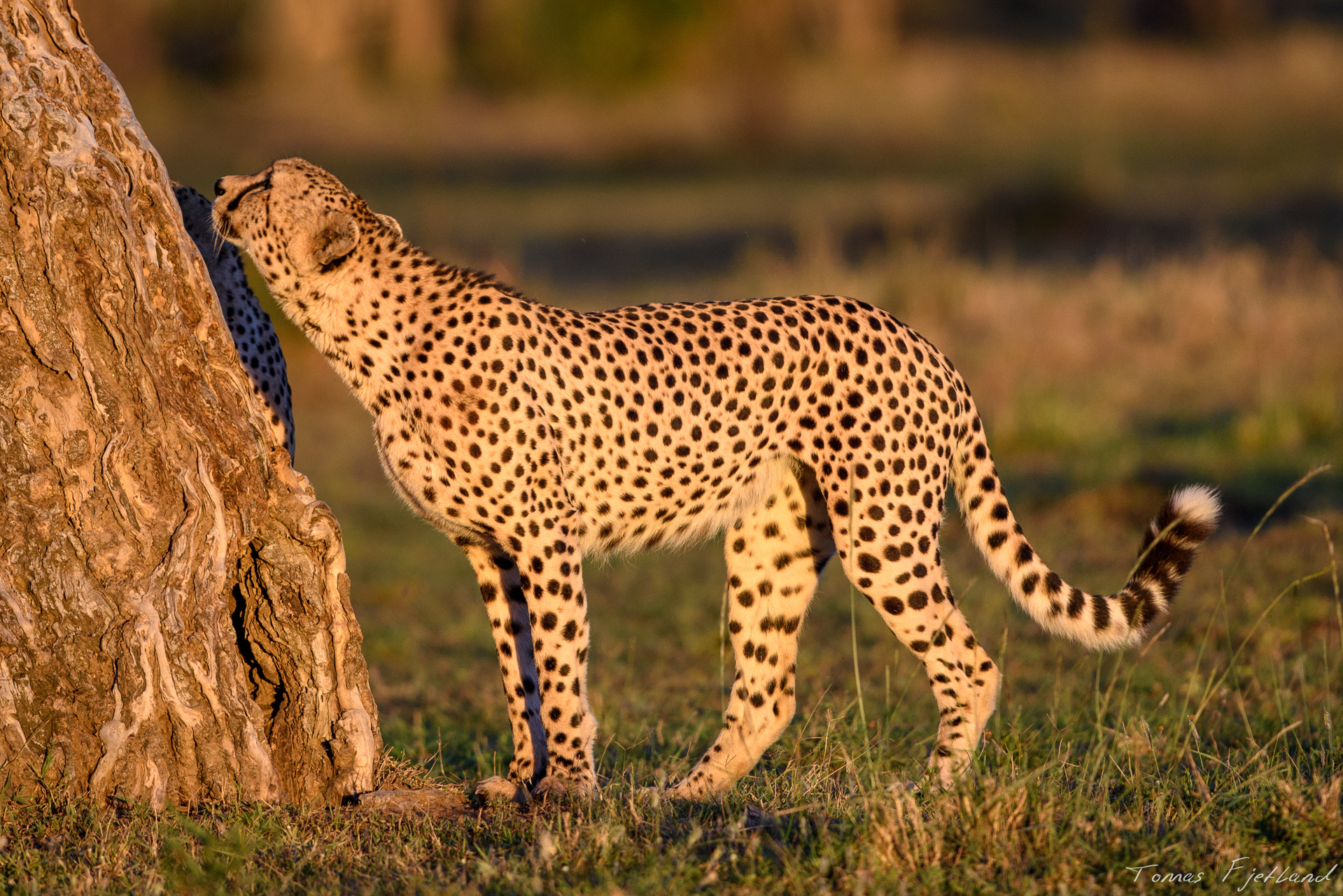
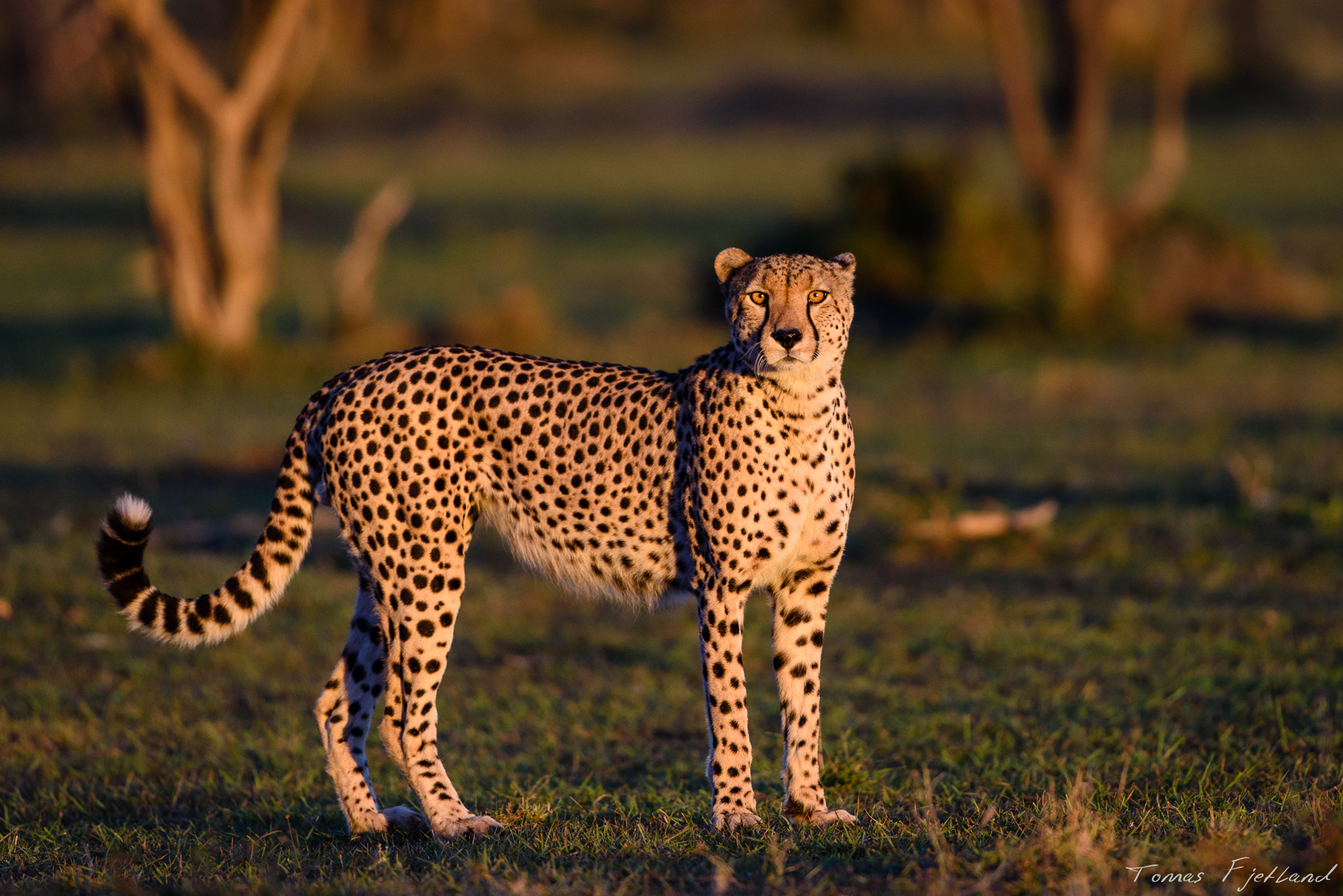
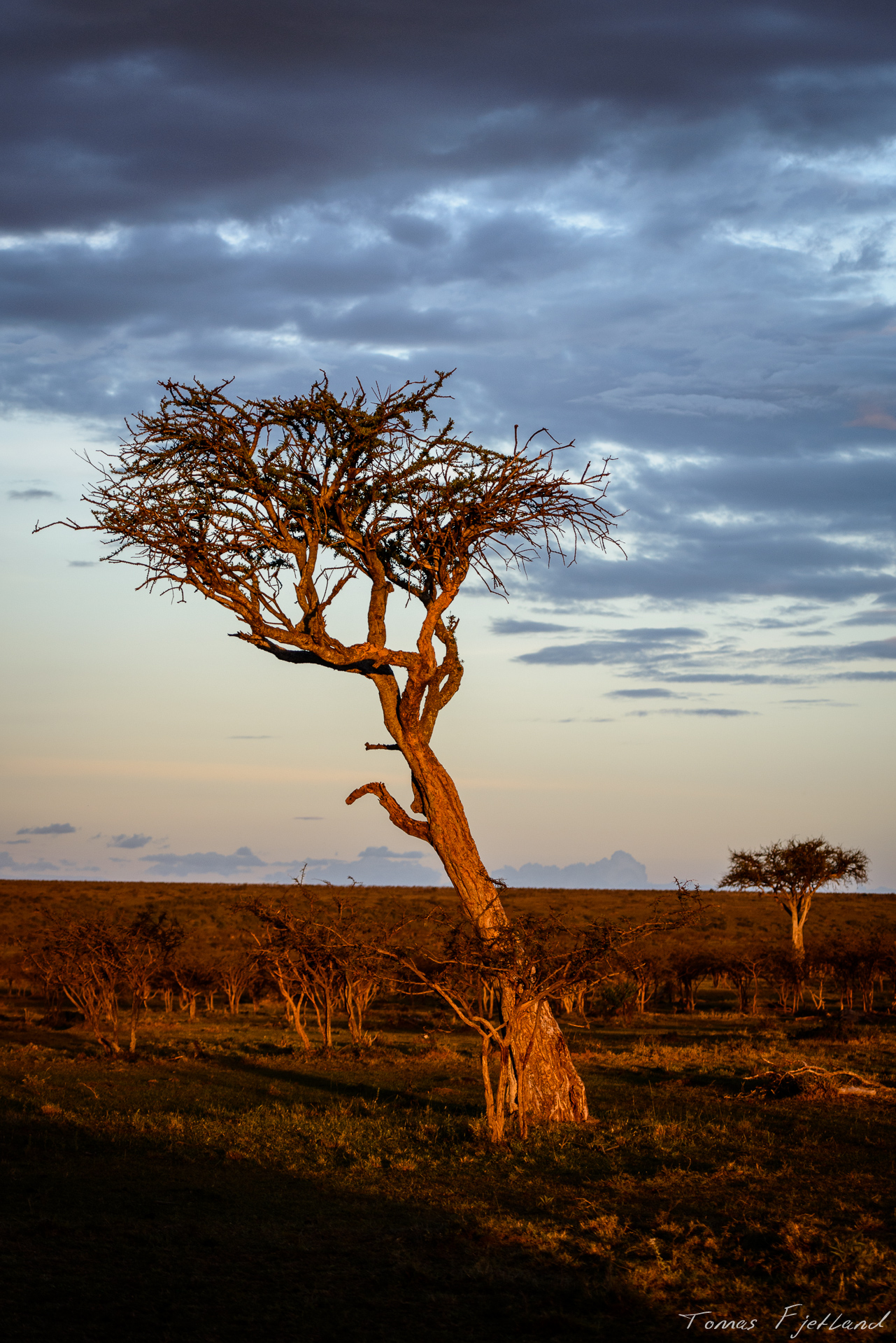
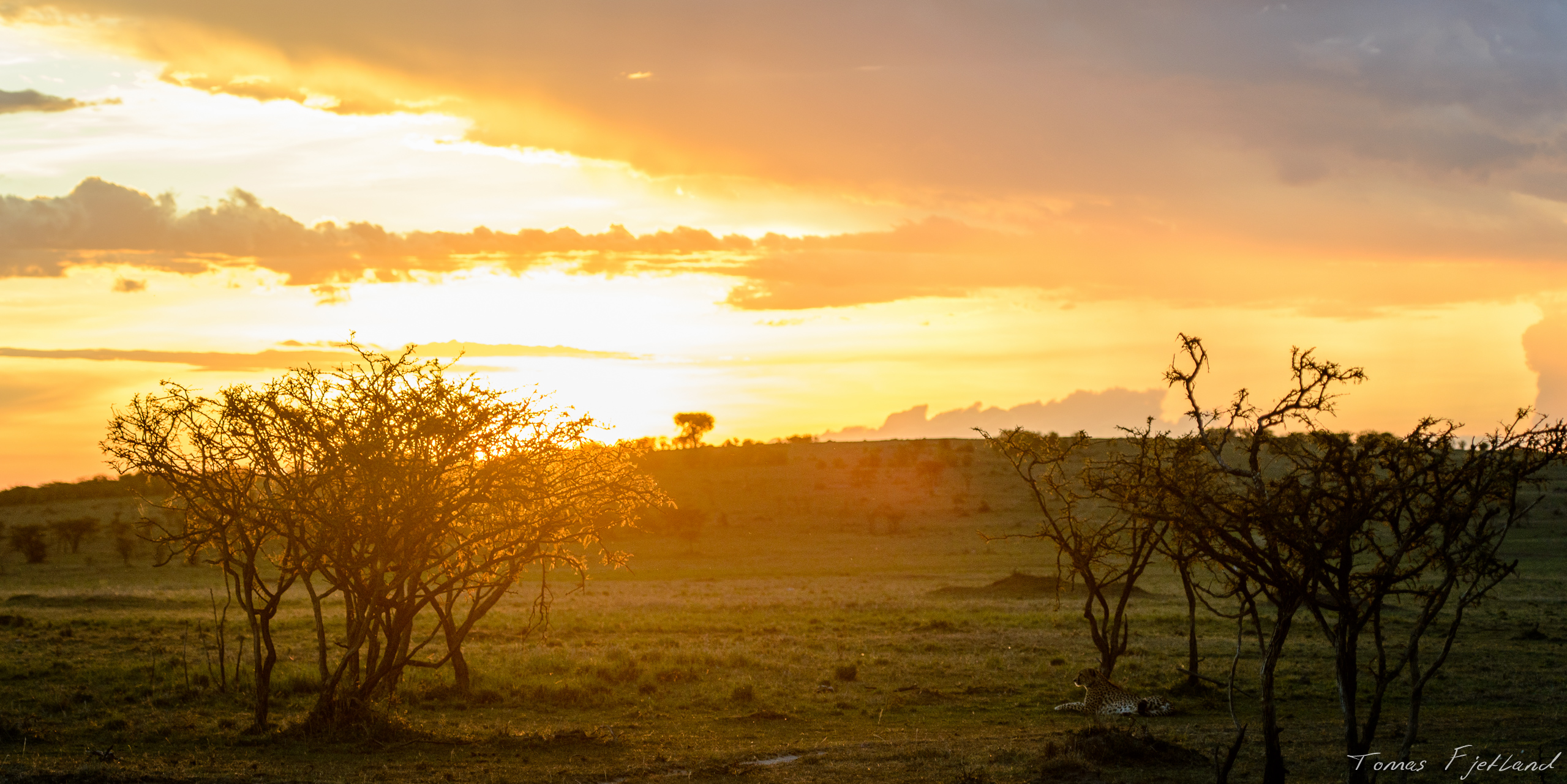
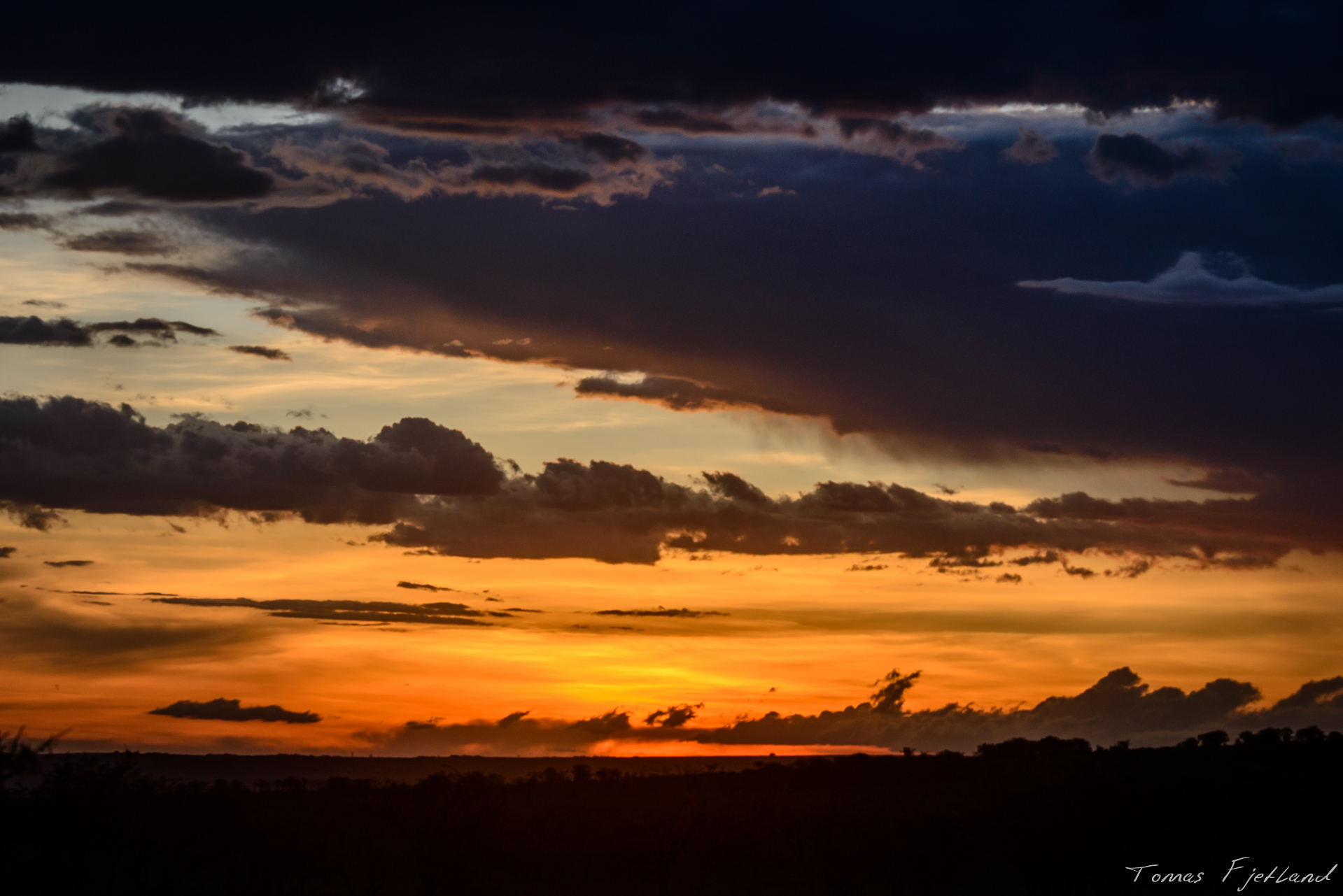
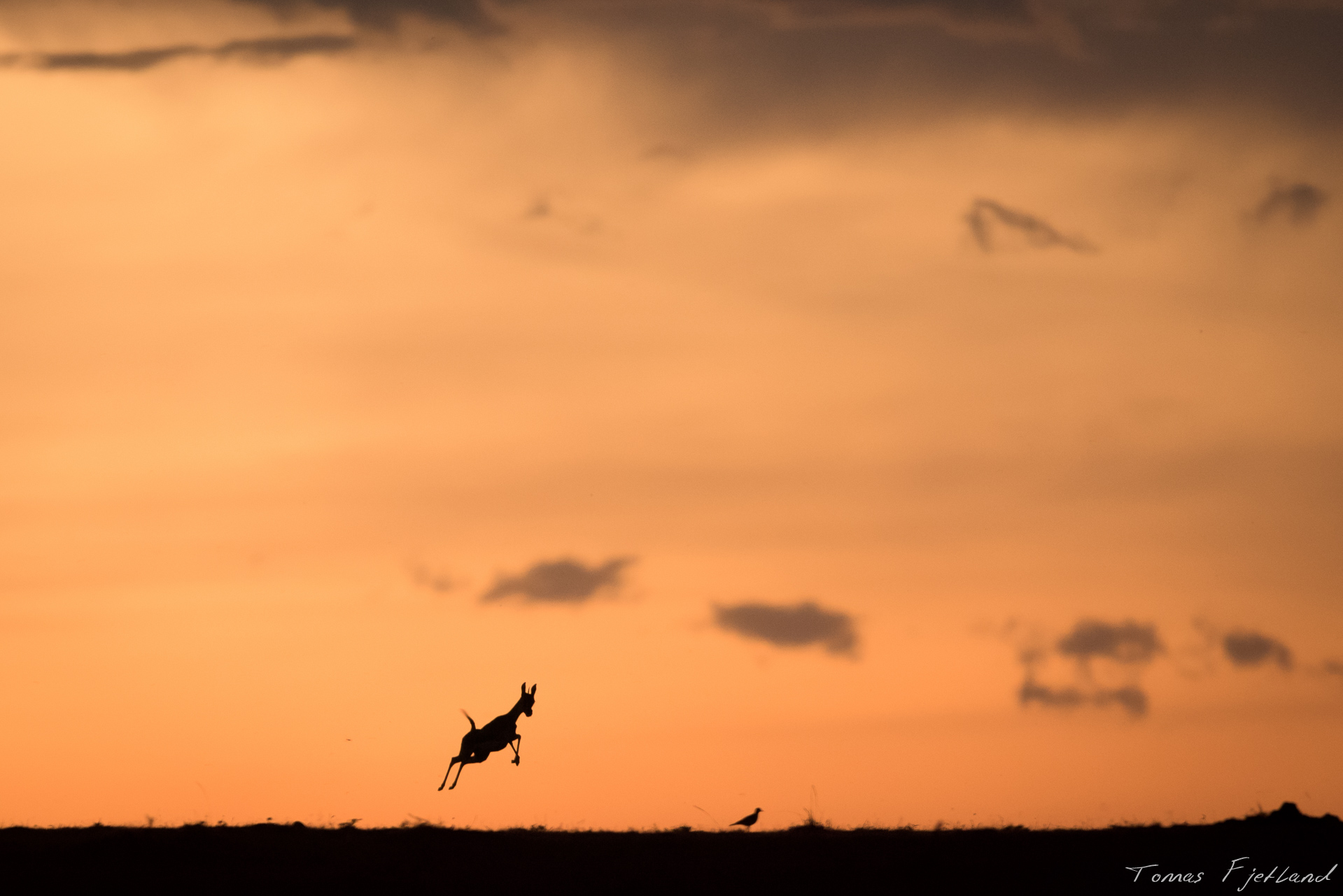
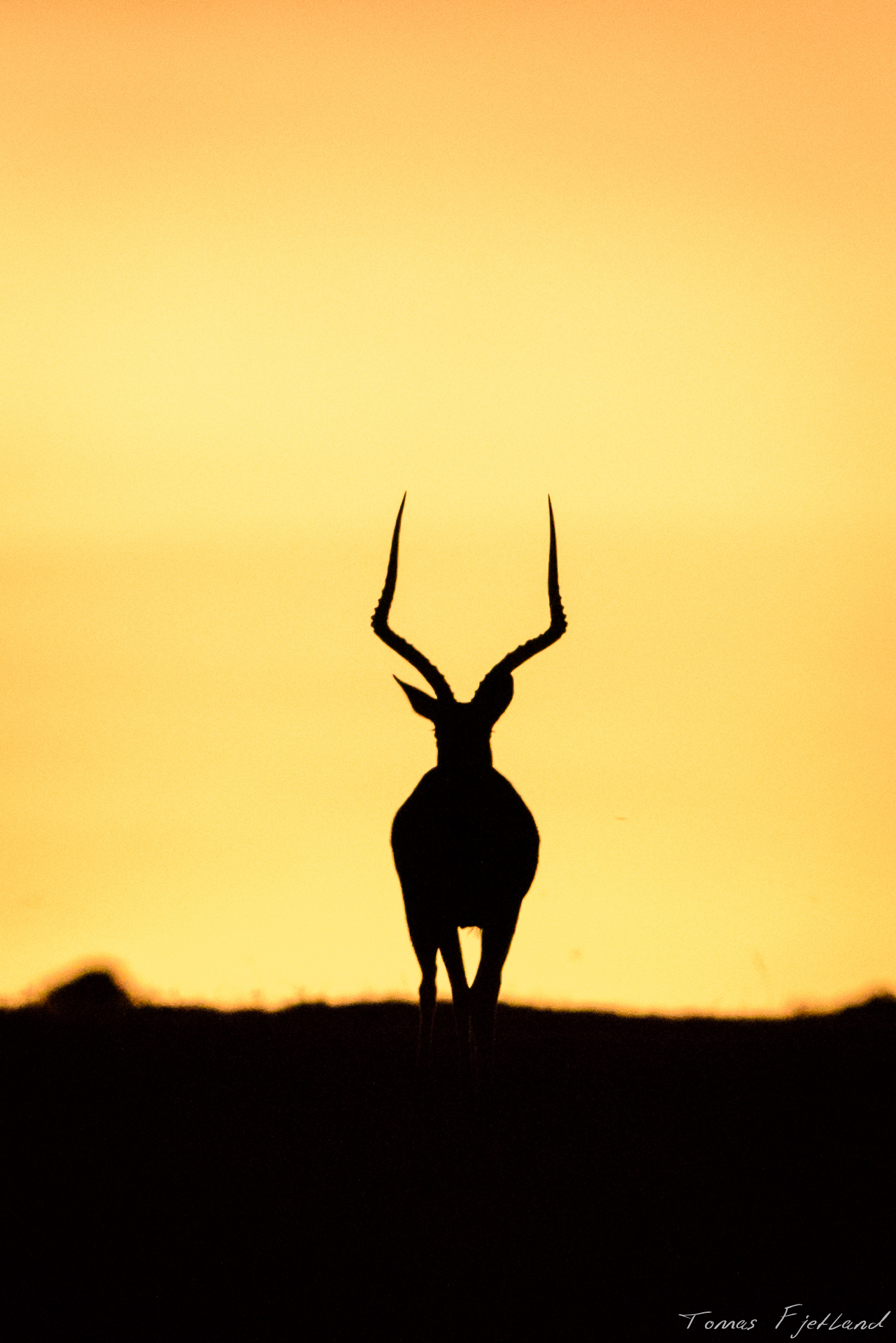
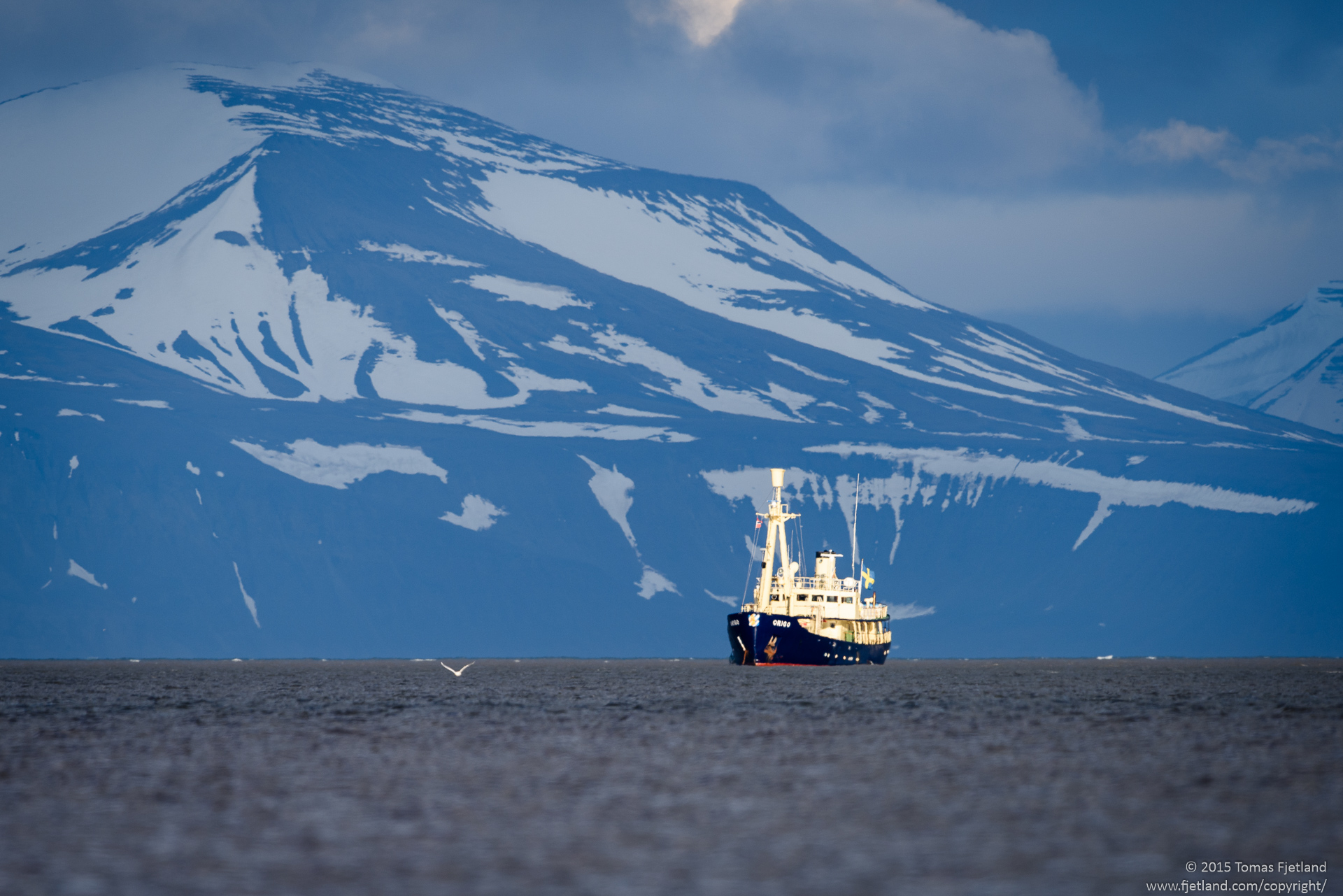
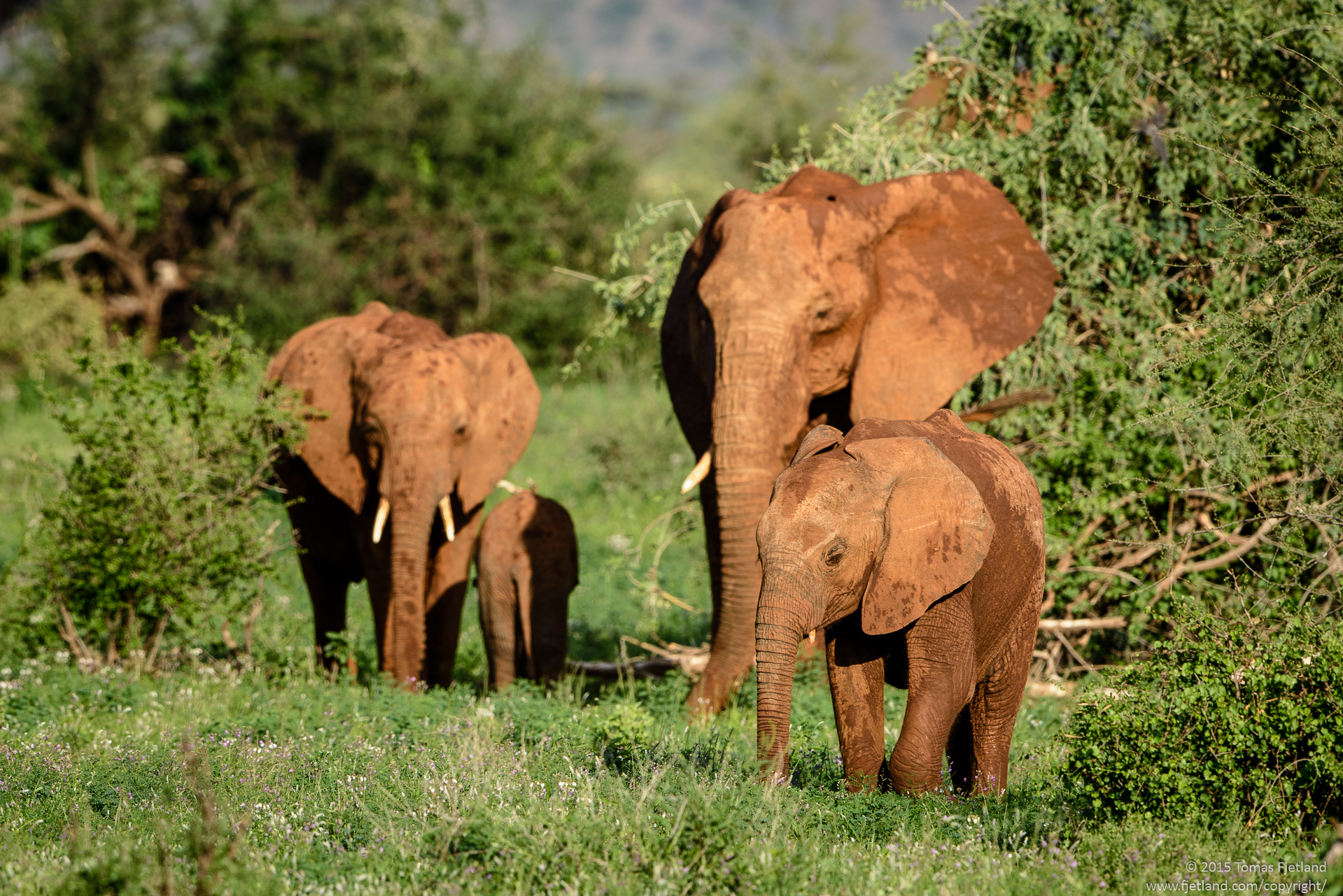
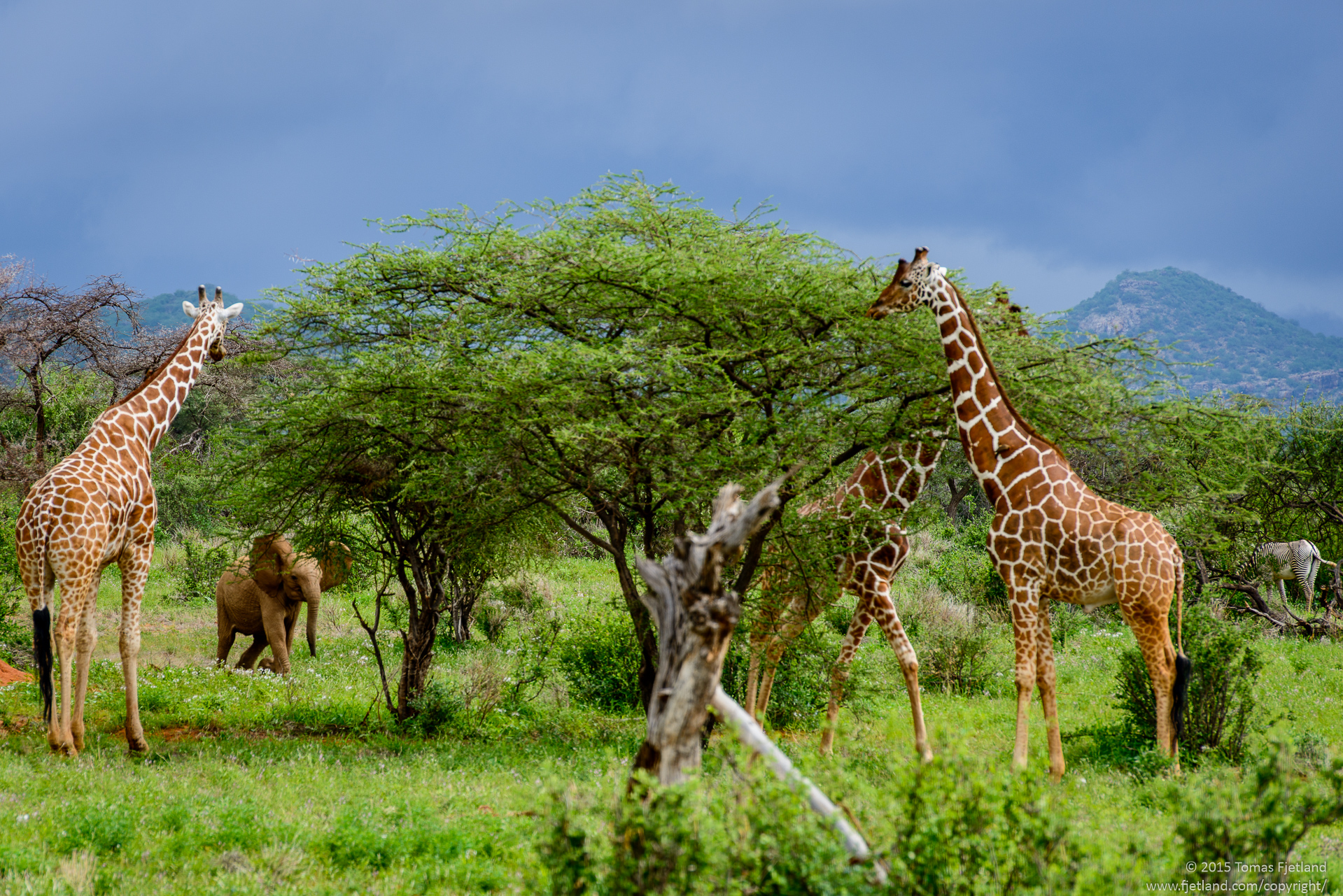
This is our favourite camp and our favourite guide! One is definitely assured of an awesome experience irrespective of the time of year you visit Porini Lion Camp!
Thank you for commenting! Porini Lion is absolutely my favorite camp in Kenya, not only because of its unique placement and surroundings, but also for the terrific people that work there. Be it the guides or any of the other people that work in the camp, you always feel like you’re among friends there. I’ve been driving around the Mara with Big John and Gerard on all my 3 visits, but I’ve also had Jackson and Kitturu as guide and driver, and they’re all incredibly knowledgeable and friendly. All in all an essential location on any Kenyan safari! 🙂